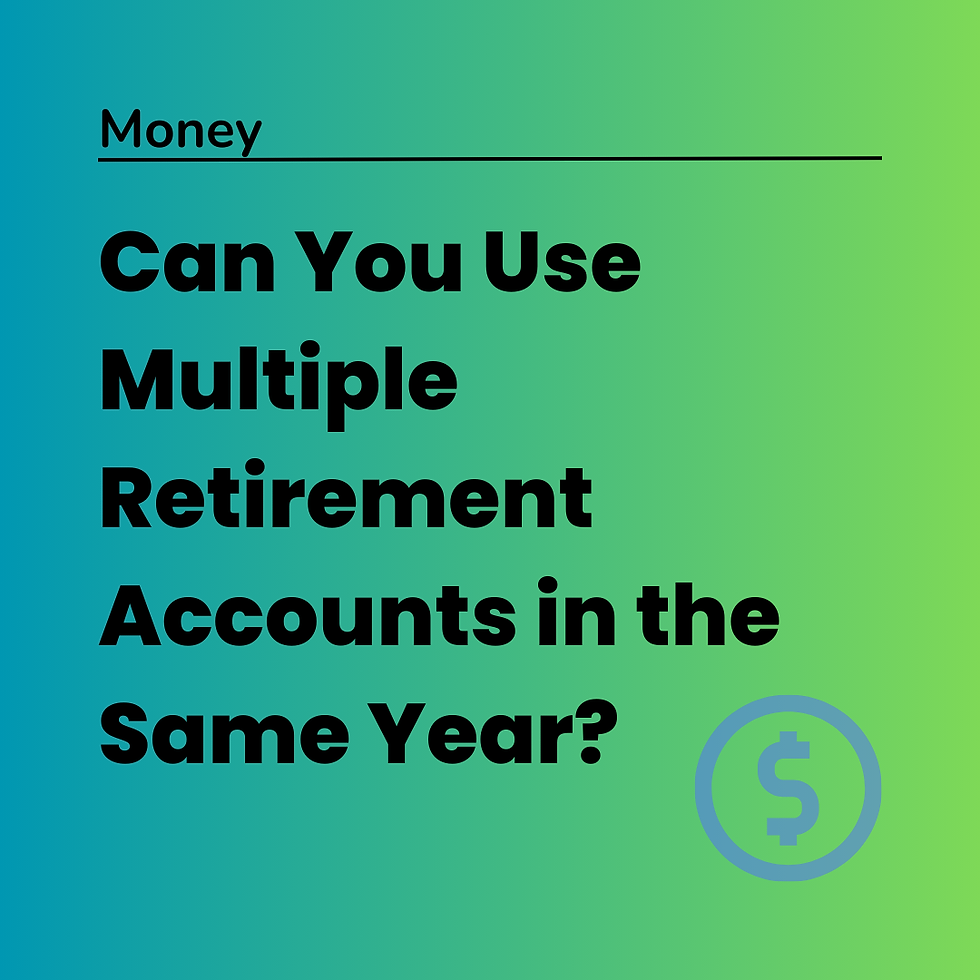Q: Traditional, Roth, or Taxable? A: Yes!
- Timothy Iseler

- Nov 22, 2024
- 3 min read
We all know that contributing to retirement accounts is a great idea, right? You get to set aside money for later (which is smart) and you get to enjoy preferential tax treatment (double smart).
But why would you want to use different account types when you save for retirement? Why not just max out that ol' IRA or 401(k) and call it good enough?
First things first: if your current retirement contributions are truly all that you can manage, then don't sweat it. I would make the argument that pretty much anyone could save a little more (seriously, even like $10 more each year), but don't feel bad if you're already doing your best. Right? Your best is all that you can do.
BUT if you have some extra cash and want to get serious about saving for retirement (you can call it financial independence, if that feels better), there are good reasons for saving into different types of accounts – including plain old taxable brokerage accounts.
Traditional – The "normal" retirement accounts – the ones where contributions reduce current year taxes – are called Traditional accounts. The upside is that you save on taxes when you contribute, and everyone loves to save on taxes. The downside is that you need to pay taxes on all distributions in retirement. And, because the IRS wants their slice, you are required to begin taking distributions (called Required Minimum Distributions or RMDs) above a certain age. If you're lucky enough to have saved & invested a lot of money in Traditional accounts, you can see how compounding growth might create a snowballing tax burden once RMDs kick in – exactly when it's hardest to handle a lot of extra taxes.
Roth – Which brings us to Roth accounts. Unlike Traditional accounts, Roth accounts offer no current year tax incentive. Instead, they let your money grow tax-deferred while you're still working and then tax-free distributions during retirement. And, since the IRS doesn't get a cut of the money in your Roth accounts (unless you violate the distribution rules, watch out!), they don't have any RMD requirement. That means your Roth investments can continue to grow & compound for potentially an extra 5, 10, or 20 years beyond your RMD age, which can mean a lot of extra tax-free money late in life.
Brokerage accounts – Non-retirement investment accounts don't offer any tax incentives when you save, which means that you'll be stuck paying taxes each year on any dividends received or realized capital gains. Sounds like a bad deal, right? But taxable brokerage accounts have a big upside over retirement accounts: you can access your money whenever you want. So if you're below age 59 1/2 (when you can take retirement money penalty-free) and you need to free up some cash, you can pull money out of your taxable accounts without the 10% penalty that retirement accounts charge for early distributions. Even though they're not actually retirement accounts, taxable brokerage accounts can play an important role in saving for retirement.
So which option is best? The one that has a current year tax break, the one that allows for tax-free growth & retirement distributions, or the one with no tax breaks but easy access?
Quick answer: all of the above.
In my opinion, you should aim to save a little into all three types of accounts whenever possible. Traditional retirement accounts give you that tax break now (which everyone loves), Roth accounts give you a tax break later, and taxable accounts give you much more freedom to access your money. People are usually most able to deal with tax consequences just after retirement, so a good rule of thumb is to take money from taxable accounts first, then tax-deferred accounts (i.e., Traditional), then pull from your tax-free accounts for later in life.
Have questions about how you can save more for retirement? Sign up for weekly Office Hours – I'm always happy to have a conversation.
Thanks,
Timothy Iseler, CFP®
Founder & Lead Advisor
Iseler Financial, LLC | Durham NC | (919) 666-7604
Iseler Financial helps creative professionals remove stress while taking control of their financial lives. We'll help identify current your strengths and weaknesses, clarify and refine your long-term goals, and prioritize decisions to improve your financial well-being now and later. Reach out today to take the first step.





Comments